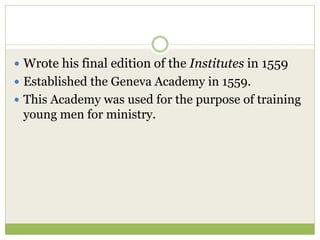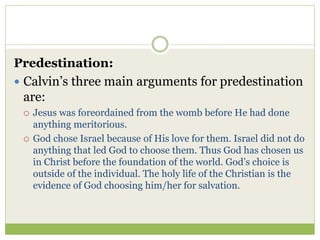This document provides a biography and overview of the theological contributions of John Calvin. It discusses Calvin's background and education in France, his conversion to Protestantism, and his work establishing reformed churches and institutions in Geneva. The summary highlights Calvin's doctrines of God's sovereignty, justification by faith, predestination, the church and sacraments. It also notes Calvin's emphasis on church discipline and the role of the civil magistrate in enforcing morality.





























